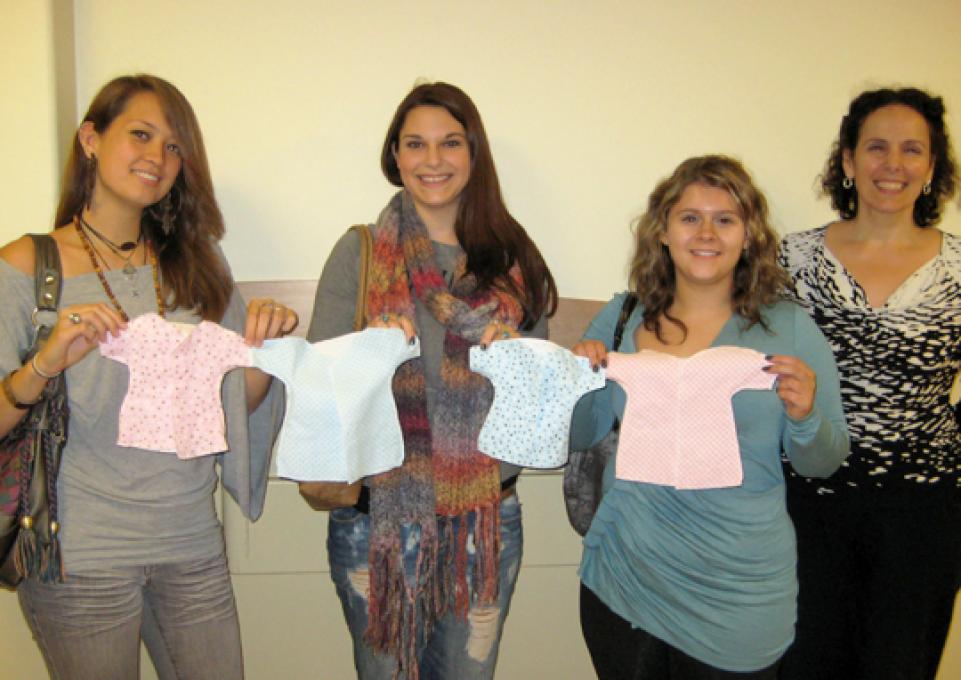
Buffalo State fashion and textile technology students recently created nightgowns for the most fragile of models—those who entered the world early.
For an assignment on mass production in associate professor Lynn Boorady’s Industrial Sewing Methods class, 10 students made 99 gowns for premature infants. They donated the gowns, which came in two sizes and four different fabrics, to the Neonatal Intensive Care Unit (NICU) at Women and Children’s Hospital of Buffalo.
"We were delighted to be the recipients of these gowns," said Martha Hickey, volunteer services coordinator for the hospital. "We've received donations for our premature babies before but never so many. Along with giving us a nice quantity, they also provided good quality. They even had a student designated for quality control."
The students designed the gowns so that they could be wrapped around the infants to avoid pulling the gowns over their heads or having to insert their arms into sleeves. They also inserted the seams on the outside of the gowns and Velcro on the back so that nothing harsh would touch the babies’ skin, explained Boorady (pictured at right).
"Their production rate was higher than 13 (gowns) per hour. That's pretty impressive for students," Boorady said. "I was very proud of their work."
She said the students chose the place to donate their finished products. Giving them to the hospital ended up going beyond a generous gesture; the gowns may help the babies thrive. "It's better for premature babies to wear clothes. They get that human touch," Boorady said.
Linda Eschberger, nurse manager for the NICU, concurred. Wearing clothes benefits premature infants because they conserve calories when they are warmer, and the gowns comfort them with a more secure feel. The biggest boon, she noted, is the psychological boost for the parents. "It makes them feel like their baby is normal and gives them peace of mind," she said. "It decreases their stress level."
The gown project provided a great lesson for the students, Boorady said—not only fabric utilization and sewing methods, but also how to give back to the community with a skill that they have.
"I decided a while ago that if we are going to make a mass-production project, we might as well do a community service," she said. "The hospital was thrilled to receive the gowns, and we are now in talks with them to mass produce lounge pants for kids in time for Christmas."
